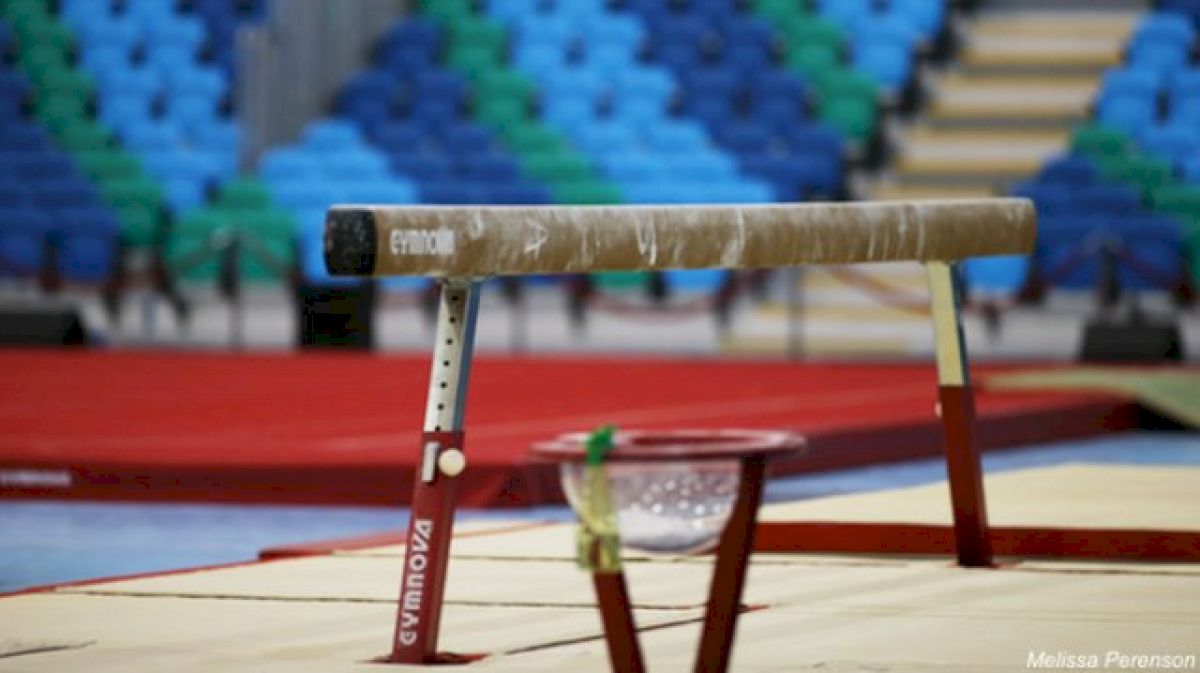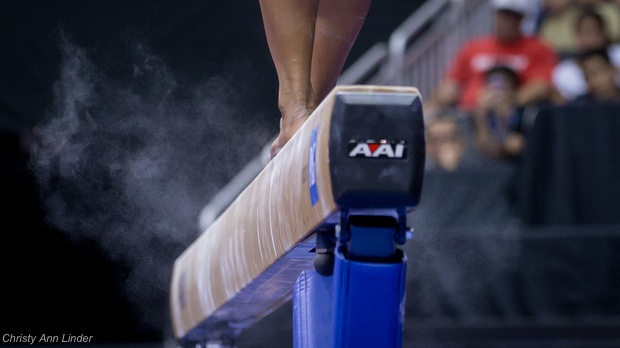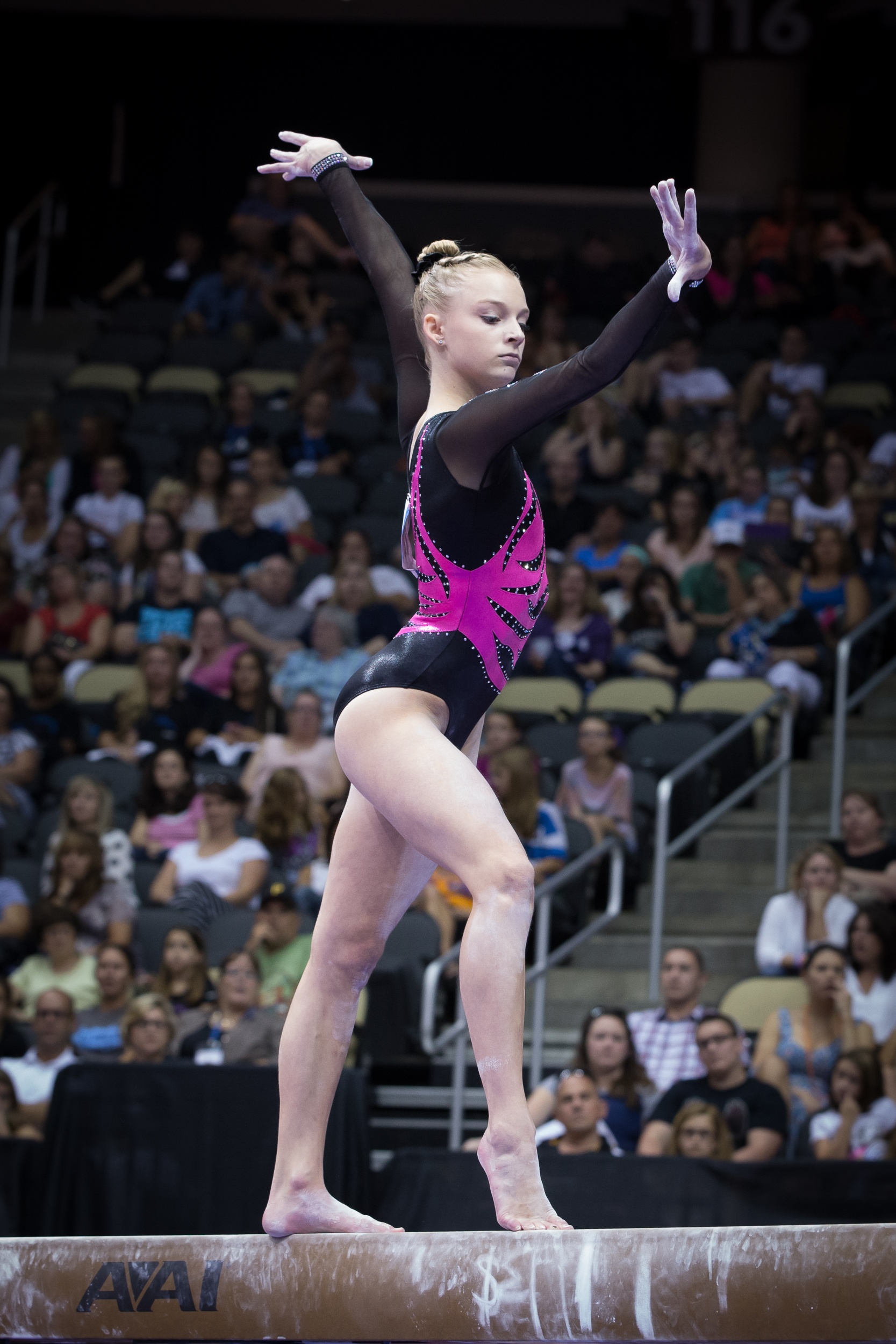Understanding the E-score in Elite Gymnastics: Balance Beam
Understanding the E-score in Elite Gymnastics: Balance Beam


We’re continuing our series on the E-score in elite gymnastics this week by looking at the balance beam, where bobbles are always noticeable and deductions can add up fast. As a reminder, our summary below is for deductions specific to the apparatus. There are other deductions that the judges may take which are considered “general faults and penalties.” The general faults are things like bent arms/knees, legs crossed during a twisting element, and flexed feet. Landing issues are also included under general faults and include legs apart on landing or landing too close to the apparatus. Most of the general faults will result in deductions of 0.10 or 0.30, with the exception of landing deductions which can be as much as 0.80.
Check out our summary of specific balance beam deductions below.
Artistry & Performance
Artistry is important on balance beam – the judges want to see the gymnast really get into the performance aspect of the exercise, as opposed to just going through each move one by one. As you might guess, these deductions are very subjective, and so the judges will almost always just take 0.10 off for each deduction and no more than that. A gymnast can get up to 0.30 off for “insufficient artistry” defined by a lack of confidence, personal style and uniqueness (words straight out of the Code of Points). Rhythm is one of the most important aspects of the routine. Judges will take off for insufficient variation in rhythm and tempo in movements, and they can also take off if they feel the routine does not flow together as it should. The exact words in the Code of Points read “The exercise should not be a series of disconnected elements.” Poor rhythm in connections specifically can receive an additional 0.10 off, as can an unnecessary pause (considered more than 1 second) before performing an element. Lastly, 0.10 can be taken off if the judges feel there was lack of creativity in movements and transitions throughout the routine.
Composition of the Routine
Deductions on composition of the routine are more objective, such as lack of directional changes and insufficient use of the entire apparatus. Judges like to see backward, forward and sideway movements, and they also want to see the gymnast have some moves or choreography that is low on the beam. If the gymnast performs a mount that is not from the table of elements in the Code of Points, she will receive a 0.10 deduction. The gymnast also cannot perform more than one ½ turn on two feet with straight legs throughout the course of the exercise. This is why you’ll often see gymnasts perform a directional changing element in order to switch which way they are facing on the beam. There is also a time limit of 1 minute, 30 seconds for the entire routine. If the gymnast lands her dismount after the sound of the second warning signal, she will receive a 0.10 deduction.Body Posture, Bobbles and Falls
Errors on balance beam are so often made up of tiny deductions of 0.10 which will add up as the routine goes on. Body posture, bobbles and falls are where the biggest deductions come into play. Body posture refers to not only to the overall shape of the gymnast’s body, but also pointed toes, and if a gymnast’s toes are turned out or in. Toes turned in can incur a deduction of 0.10 to 0.30.Bobbles, for lack of a better term, are some of the more obvious deductions, and include additional support of a gymnast’s leg against the side surface of the beam (a 0.30 deduction) and having to use additional support in order to meet the technical requirement of a skill, also a 0.30 deduction. Any additional movement taken to maintain balance can incur as little as 0.10 off or as much as 0.50 off, depending on how big of a balance check the gymnast takes. The biggest are falls, which are an entire point off, and if a gymnast grasps the beam with her hands in order to avoid a fall, which is 0.50 off. If a gymnast does fall, she is allowed 10 extra seconds to remount the beam, but if she does not remount in this time period, the exercise is considered terminated.
Hopefully this summary has given you a better understanding of how deductions are taken on balance beam. Stay tuned for next week’s summary of deductions on floor exercise.
Related:
Understanding the E-score in Elite Gymnastics: Uneven Bars
Understanding the E-Score in Elite Gymnastics: Vault
Elite Vaulting: The D-Score Explained
Crafting a Bars Routine: An Analysis of the D-Score
Crafting a Floor Routine: An Analysis of the D-Score
Crafting a Beam Routine: An Analysis of the D-Score